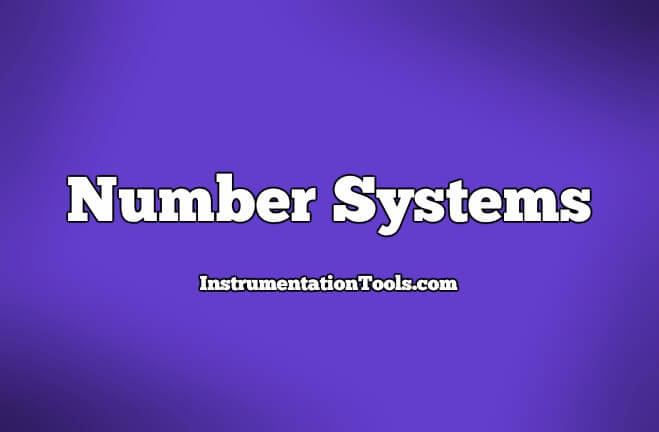Because binary numeration requires so many bits to represent relatively small numbers compared to the economy of the decimal system, analyzing the numerical states inside of digital electronic circuitry can be a tedious task.
Computer programmers who design sequences of number codes instructing a computer what to do would have a very difficult task if they were forced to work with nothing but long strings of 1’s and 0’s, the “native language” of any digital circuit.
To make it easier for human engineers, technicians, and programmers to “speak” this language of the digital world, other systems of place-weighted numeration have been made which are very easy to convert to and from binary.
Octal
One of those numeration systems is called octal, because it is a place-weighted system with a base of eight. Valid ciphers include the symbols 0, 1, 2, 3, 4, 5, 6, and 7.
Each place weight differs from the one next to it by a factor of eight.
Hexadecimal
Another system is called hexadecimal, because it is a place-weighted system with a base of sixteen.
Valid ciphers include the normal decimal symbols 0, 1, 2, 3, 4, 5, 6, 7, 8, and 9, plus six alphabetical characters A, B, C, D, E, and F, to make a total of sixteen. As you might have guessed already, each place weight differs from the one before it by a factor of sixteen.
Let’s count again from zero to twenty using decimal, binary, octal, and hexadecimal to contrast these systems of numeration:
Number Decimal Binary Octal Hexadecimal ------ ------- ------- ----- ----------- Zero 0 0 0 0 One 1 1 1 1 Two 2 10 2 2 Three 3 11 3 3 Four 4 100 4 4 Five 5 101 5 5 Six 6 110 6 6 Seven 7 111 7 7 Eight 8 1000 10 8 Nine 9 1001 11 9 Ten 10 1010 12 A Eleven 11 1011 13 B Twelve 12 1100 14 C Thirteen 13 1101 15 D Fourteen 14 1110 16 E Fifteen 15 1111 17 F Sixteen 16 10000 20 10 Seventeen 17 10001 21 11 Eighteen 18 10010 22 12 Nineteen 19 10011 23 13 Twenty 20 10100 24 14
Octal and hexadecimal numeration systems would be pointless if not for their ability to be easily converted to and from binary notation. Their primary purpose in being is to serve as a “shorthand” method of denoting a number represented electronically in binary form.
Because the bases of octal (eight) and hexadecimal (sixteen) are even multiples of binary’s base (two), binary bits can be grouped together and directly converted to or from their respective octal or hexadecimal digits.
With octal, the binary bits are grouped in three’s (because 23 = 8), and with hexadecimal, the binary bits are grouped in four’s (because 24 = 16):
Convert Binary to Octal
BINARY TO OCTAL CONVERSION Convert 10110111.12 to octal: . . implied zero implied zeros . | || . 010 110 111 100 Convert each group of bits ### ### ### . ### to its octal equivalent: 2 6 7 4 . Answer: 10110111.12 = 267.48
We had to group the bits in three’s, from the binary point left, and from the binary point right, adding (implied) zeros as necessary to make complete 3-bit groups.
Each octal digit was translated from the 3-bit binary groups. Binary-to-Hexadecimal conversion is much the same:
Convert Binary to Hexadecimal
BINARY TO HEXADECIMAL CONVERSION Convert 10110111.12 to hexadecimal: . . implied zeros . ||| . 1011 0111 1000 Convert each group of bits ---- ---- . ---- to its hexadecimal equivalent: B 7 8 . Answer: 10110111.12 = B7.816
Here we had to group the bits in four’s, from the binary point left, and from the binary point right, adding (implied) zeros as necessary to make complete 4-bit groups:
Likewise, the conversion from either octal or hexadecimal to binary is done by taking each octal or hexadecimal digit and converting it to its equivalent binary (3 or 4 bit) group, then putting all the binary bit groups together.
Incidentally, hexadecimal notation is more popular, because binary bit groupings in digital equipment are commonly multiples of eight (8, 16, 32, 64, and 128 bit), which are also multiples of 4. Octal, being based on binary bit groups of 3, doesn’t work out evenly with those common bit group sizings.

